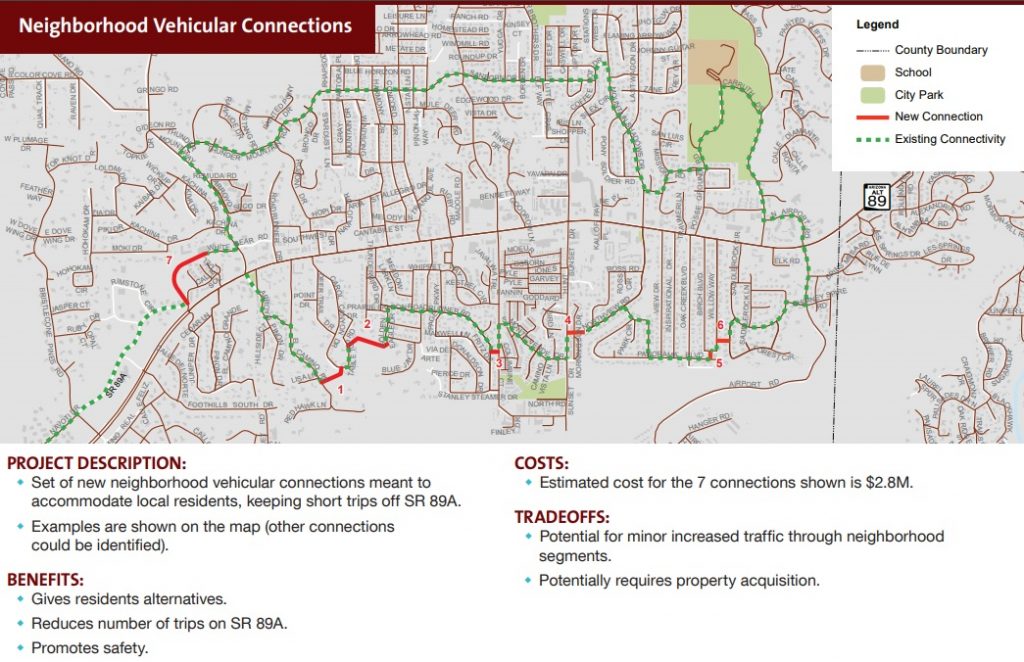Sedona residents and visitors experienced tremendous backups throughout Sedona last week due in part to our terrible road infrastructure coupled with road construction in Uptown to build a dedicated left-turn lane between L’Auberge Lane and Forest Road.
There really isn’t much of a good reason for the city to have started construction in December, with workers laboring through the Christmas and New Year’s holidays due to the anticipated holiday traffic that comes around Christmastime, but a several-months-long construction project has to start sometime, and we can hope that the majority of the this heavy road work will be completed before we reach the rolling spring break in the first week of March and visitors from around the country decide that Sedona is a great place to visit with their families while on spring break.
Delays due to construction are expected no matter where you live, but what makes this situation unique is that our traffic delays are worsened by the terrible infrastructure chokepoints and the fact that most of the improvements as of late have been cosmetic, aesthetic or insignificant. Sedona in Motion had some great ideas, many of which were taken right from our November 2015 story “A Comprehensive List of Possible Traffic Solutions,” such as adding a second southbound lane and a pedestrian barrier in Uptown, and building a northern bypass from State Route 89A to Jordan Road.
11-06-15-RRN-6A-7AOther SIM solutions that we didn’t address but that would greatly help flow would be neighborhood connectors — short roads to connect our current residential islands to each other so drivers could avoid going to State Routes 179 or 89A when driving short distances.
City leaders got pushback from a NIMBY on the first of these 14 possible roads, gave up and have since let the plan languish on the city website, where it will likely remain until it “disappears” under a future council or administration.

First, let’s dispel some misconceptions.
The Arizona Department of Transportation’s plan in the early 2000s was to widen State Route 179 from the Village of Oak Creek to the “Y” intersection — this includes the stretch between Tlaquepaque and what is now Tlaquepaque North.
State Route 179 is ADOT’s problem — we are the victims. Keep Sedona Beautiful and its political affiliate that shared board members, Voice of Choice for 179, owe residents an apology for co-opting the public process to prevent this improvement.
Many people erroneously assume that a widened State Route 179 from the VOC would, for inexplicable reasons, suddenly merge into two lanes at Tlaquepaque.
Not only was this not the plan, it’s absurd to assume it would be.
While pretty and an attractive destination for residents and visitors for 50 years, Tlaquepaque is a shopping complex. It is not a national monument or state park. The state highway that abuts it is not inviolate, but is owned by ADOT, which could chose to widen it to four lanes starting tomorrow if officials determined to do so.
Secondly, opponents make the erroneous claim that adding more roads adds more traffic. This is a logical fallacy known as “induced demand,” which was based on an economic theory from the 1970s. It does not hold true when it comes to real-world, 3D objects. Later researchers noted the Los Angeles-based study failed to account for the doubling of the population in southern California area over the years studied.
The most obvious rebuttal to induced demand is our own city: Prior to 2016, cars heading southbound from Oak Creek Canyon traveled in one southbound lane. On a busy weekend, traffic could back up to Midgley Bridge and, in some cases, as far back as Briar Patch.
The city of Sedona began installing a second southbound lane in 2016 and there has not been a significant backup since the second lane was installed. Additional lanes work when the alternative is “do nothing.”
In this election year, we will need candidates willing to talk to state and regional officials to build roads and fund projects to positively affect our community. ADOT is a state transportation agency. Its mission is to get Arizona residents and visitors to Arizona to their destinations swiftly and efficiently.
To get them to do their jobs requires a city council and a mayor willing to call state officials weekly or even daily and become gadflies to get projects done rather than wasting time on pet projects that benefit a handful of donors or inconsequential political matters that neither benefit the majority nor are important given the overwhelming traffic problems. Our residents, quite honestly, should be embarrassed
that this city council and previous city councils have not made urgent demands weekly, publicly, on our behalf, to ADOT and other state officials and state lawmakers.
On our Facebook posts last week, we had plenty of comments offering conjectures about what could fix the roads, why they won’t be fixed and the political intransigence of local leaders who fail to get anything done. Sedona’s previous mayors lamented that nothing could be done with ADOT. As you evaluate candidates this cycle, ask them directly how they will demand improvements from ADOT.
If you find no suitable candidate, run yourself. You have until Monday, April 8, to collect 287 signatures. Make your platform fixing Sedona’s traffic by working with state and regional officials and you will be elected handily.